Settings
Select THEMES with LIGHT / DARK variations
Manage LIGHTS OUT save data and SOUND settings
Ayrton Senna was one of the most highly regarded Formula 1 drivers of the late 80s and early 90s. His fearless nature and technical abilities on and off the track set him apart as one of the all time greats of the sport.
He was tragically killed on May 1st, 1994 at Imola Circuit, Italy during the San Marino Grand Prix, where he lost control of his car and collided with a concrete barrier.
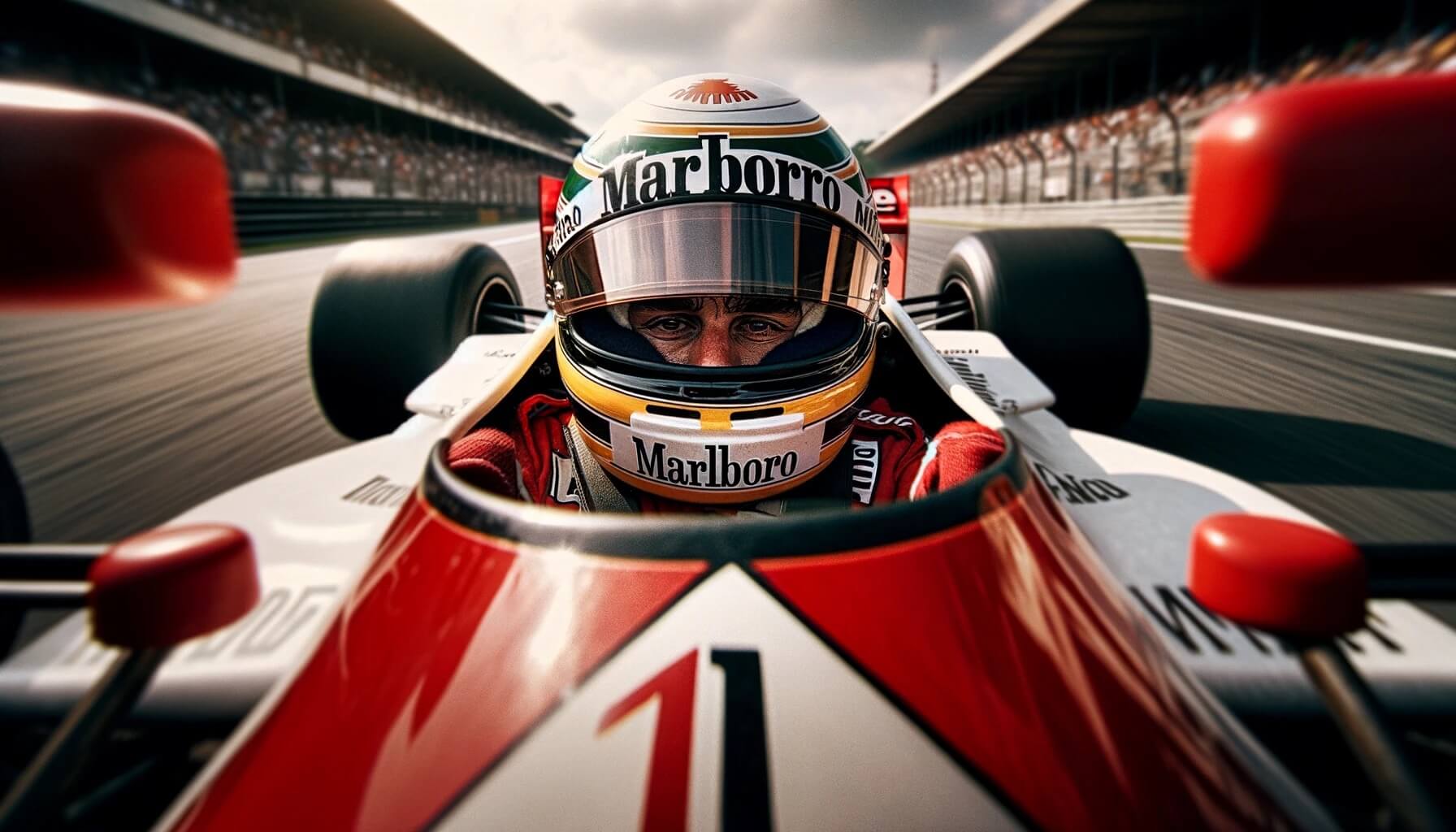
The precise cause of the crash has still never been proven, however there are a number of possible contributing factors which have been explored in this article.
Ayrton Senna da Silva was a three-time F1 World Champion, whose name is synonymous with excellence, passion, and unparalleled skill on the racetrack.
Bursting onto the Formula 1 scene in the mid-1980s with Toleman Motorsport, the Brazilian captivated audiences with his fearless driving style and unwavering determination to win.
His ability to extract every ounce of performance from his cars, combined with a unique blend of technical mastery and raw talent, set him apart as one of the greatest drivers in the history of the sport.
Senna clinched the Formula 1 Drivers’ Championship titles in 1988, 1990, and 1991 with McLaren, affirming his status as a motorsport legend.
When I was a kid I had all the books, all the videos… Ayrton was the driver I looked up to, way before I even started racing. He inspired me to be a driver. Lewis Hamilton
But what truly set Senna apart was his extraordinary adaptability under changing conditions, like at Monaco where he claimed his first Formula 1 victory in a rain-soaked 1984 race. Senna demonstrated the ability to adjust his driving style to different cars and circuits with unmatched precision.
His masterful handling of the McLaren during the 1993 European Grand Prix at Donington Park, where he outpaced his rivals in severely wet conditions, particularly stands out as a testament to his exceptional skill and deep understanding of race craft.
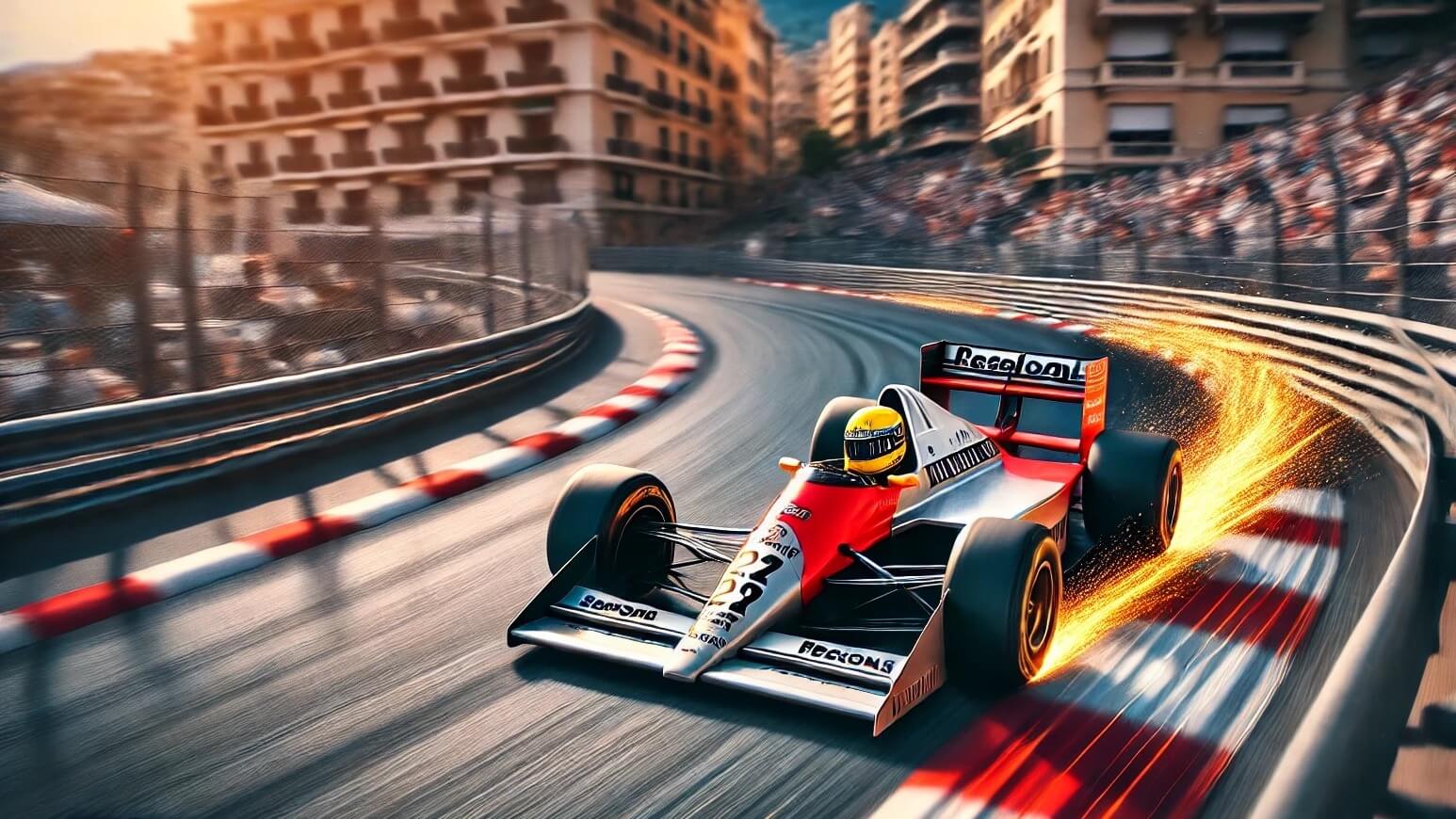
Ayrton Senna's impact on Formula 1 extended far beyond his exceptional talent on the racetrack. Throughout his career, he constantly pushed for safety improvements, pioneering initiatives that transformed F1 into a safer environment.
Senna recognized the dangers of motorsport and was unafraid to speak out against unsafe conditions. He played a pivotal role in revitalizing the Grand Prix Drivers' Association, advocating for improved safety standards, track conditions, and regulations.
He also worked closely and meticulously with his engineers to implement innovative safety features, including advancements in cockpit design and crash structures, aimed at reducing the risk of injury in accidents.
The trouble with asking for good memories of Ayrton is that I do not have any bad ones. Perhaps my very vivid memories are of his strong opinion, and most of the time he was right. Bernie Ecclestone
Ayrton Senna was tragically killed on May 1st, 1994 at Imola Circuit, Italy during the San Marino Grand Prix, marking an untimely end to one of the most remarkable careers in motorsport.
While leading the race, and following five frustratingly slow laps behind the Porsche 911 Carrera safety car, the fatal crash occurred at Tamburello corner; a long, sweeping, left-hander that, could be tackled at speeds exceeding 180mph / 300kph.
Senna ultimately lost control of the car approaching the exit of the corner and torpedoed directly into the concrete barrier, destroying the front end and right side of the car and resulting in fatal head injuries.
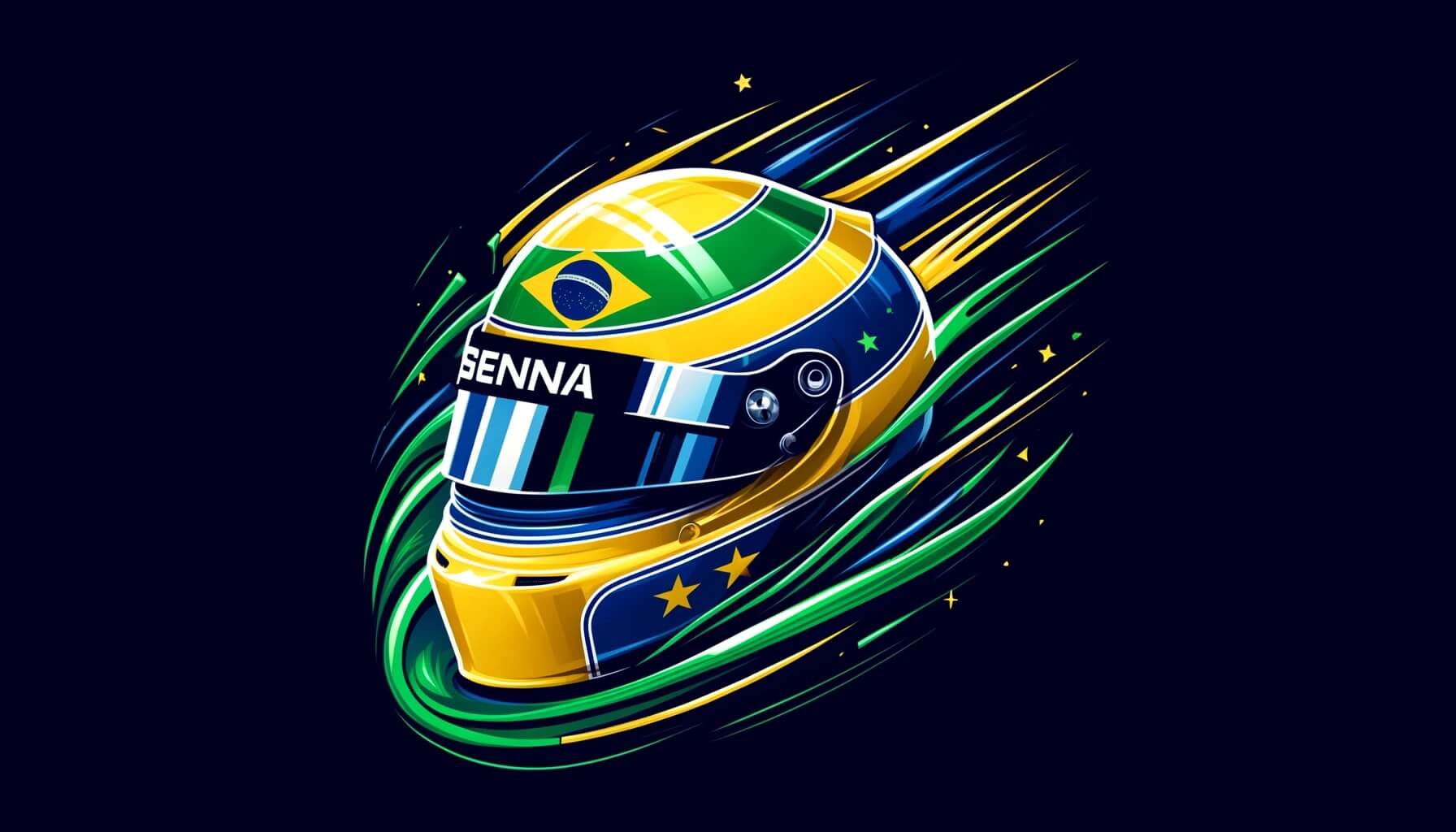
For those that wish to, television coverage of the shocking collision can be viewed here.
The race was immediately paused and circuit medics sprung into action, extracting him from the wreckage and airlifting him 25 miles to Maggiore Hospital in Bologna.
Despite the best efforts of medical professionals, Ayrton Senna da Silva was sadly pronounced dead later that day at the prime age of just 34 years old.
I had one hero, his name is Ayrton Senna. Michael Schumacher
The news of Senna's death was withheld until after the conclusion of the Grand Prix, allowing the race to continue uninterrupted. This enabled Senna’s Williams teammate Damon Hill to take victory ahead of the then championship-less Michael Schumacher in his Benetton in second place.
Schumacher was just 7 points ahead of Senna at the time, and went on go on to claim the 1994 Championship as hist first title. Damon battled him hard for the remainder of the season though, with David Coulthard and Nigel Mansell taking Ayrton's place. Between them, they were able to secure for Constructors Championship for Williams.
The announcement of Senna's death was deliberately delayed until after the conclusion of the Grand Prix. This decision was made to avoid the entire circuit being shut down and turned into a crime scene, which would have disrupted the ongoing race.
Italian sporting death laws are unconventional, treating accidents as potential homicides until proven otherwise. This led to a delay in announcing Senna's death as authorities conducted inquiries to determine the exact circumstances.
Promptly after the incident, investigations began, with authorities prioritizing evidence gathering, despite the race's continuation. This common practice in high-profile events like Formula 1 races reflects the commitment to thorough inquiries into such serious accidents.
This is the part of Ayrton’s tragic story which is still heavily debated to this day, 30 years on. While nobody can, nor likely ever will pinpoint the exact reason why Senna crashed, there are a number of potential factors to explore that may have contributed to the fateful collision.
Insights from the autobiographies of Damon Hill and Adrian Newey, Williams Chief Car Designer at the time, who delve into the subject matter from different angles, provide valuable perspectives that have been leveraged throughout this examination.
The Japanese and the Brazilians saw him as a god. His passion was undeniable and I sincerely believe he wanted to make the world a better place Damon Hill
During qualifying the previous day, 34 year old Austrian driver, Roland Ratzenberger tragically lost his life at the Villeneuve corner, casting a somber shadow over the paddock that weekend. It was the first fatality in Formula 1 in over 12 years, a stark reminder of the inherent dangers of motorsport.
The impact of Ratzenberger's death reverberated deeply among the drivers, teams, and fans, many of whom had never experienced such a loss in the the sport.
For Damon Hill, the son of legendary driver Graham Hill, the specter of death on the racetrack was all too familiar. Having grown up in the motorsport world, Hill had witnessed the funerals of numerous drivers, including his father's peers, such as Jim Clark and Jochen Rindt.
These experiences instilled in Hill a profound awareness of the risks involved in racing and the acceptance of mortality that drivers faced each time they stepped onto the track.
For Ayrton Senna, who was deeply affected by Ratzenberger's death, the events of the previous day undoubtedly weighed heavily on his mind as he prepared for the race.
Conversations and discussions in the drivers' briefing and among teams following the accident likely added to the heightened sense of concern and apprehension among the drivers, further influencing Senna's state of mind leading up to the fateful race day.
Despite the somber atmosphere, he was determined to honor Ratzenberger's memory in the race.
Senna had prepared an Austrian flag in the cockpit of his car and intended to wave it at the end of the race in tribute to Ratzenberger, a gesture that underscored the profound impact of the tragedy on the racing community.
This poignant act of remembrance added an extra layer of significance to Senna's participation in the race, highlighting the emotional turmoil and the sense of solidarity among the drivers in the face of tragedy.

Before the introduction of purpose-built safety cars like the Mercedes-Benz C36 AMG, Formula 1 utilized various ordinary road cars, including models provided by dealerships local to the Grand Prix circuits.
One such example was the Peugeot 309 GTI, which was used as a safety car during certain races in the early 1990s. These road cars lacked the specialized modifications and performance capabilities necessary to lead the field safely during caution periods, posing potential dangers to the drivers following behind.
Leading up to the 1994 San Marino Grand Prix, concerns were raised by a number of drivers about the pace of the safety car. They argued that it was far too slow, which could lead to tyre temperatures dropping and reduced grip levels for the drivers following behind. Senna, in particular, was very vocal about the potential dangers posed by the slow pace, expressing his concerns to race officials and fellow drivers.
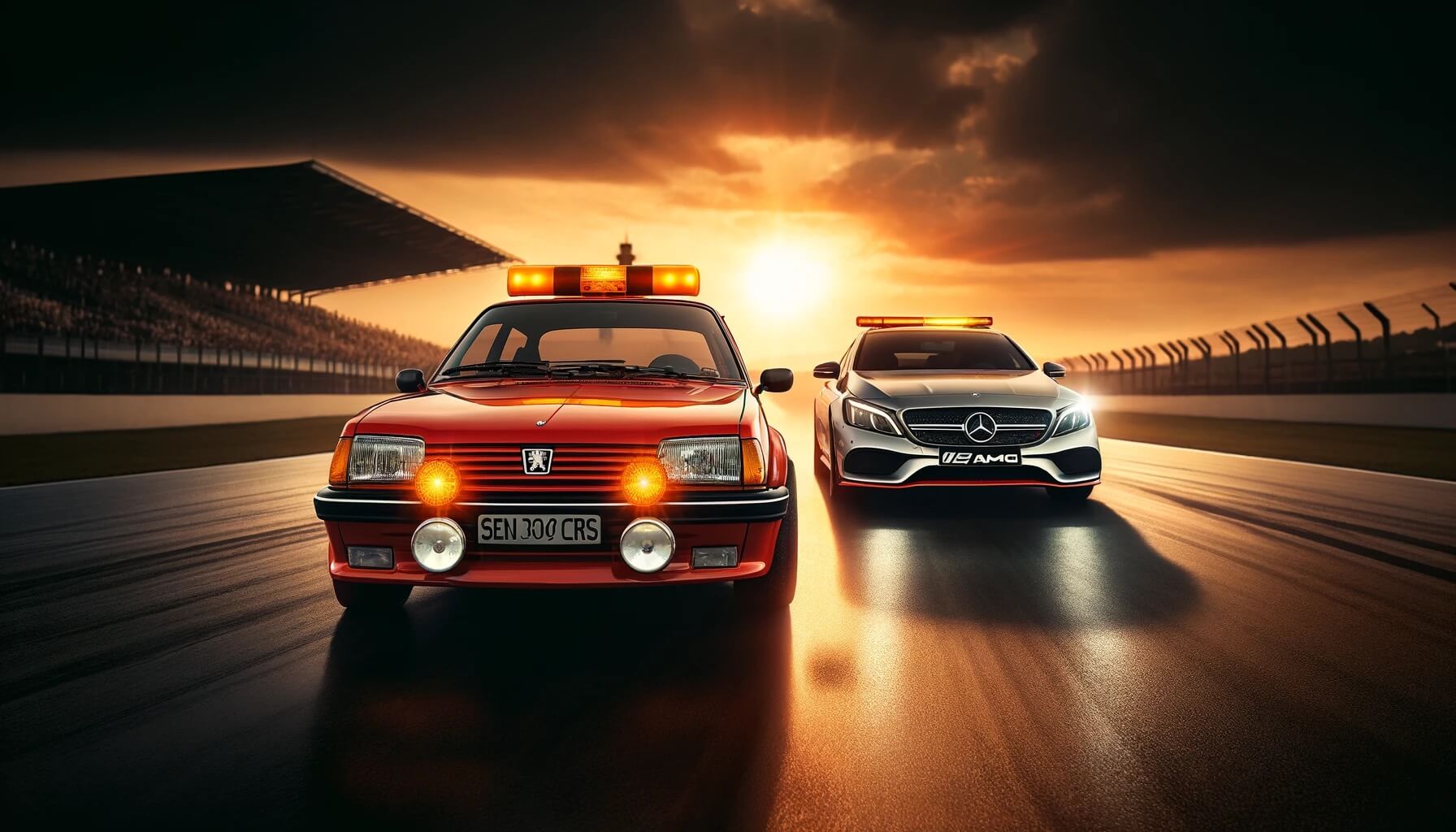
During the race, the safety car was deployed for five laps following an accident involving Senna’s fellow countryman Rubens Barrichello. The extended period behind the safety car undoubtedly had an impact on the preparation of the cars to resume racing at full speed.
When I first came round in the medical center after my accident, the first face I saw was Ayrton's, with tears in his eyes. I had never seen that with Ayrton before. I just had the impression that he felt as if my accident was like one of his own. He helped me a lot with my career and I can't find the words to describe his loss. Rubens Barrichello
There has been considerable debate about the potential role of debris on the track in Ayrton Senna's fatal accident. Some theories suggest that debris, such as a piece of wreckage from a previous incident, may have punctured one of Senna's tires, leading to a loss of control and the subsequent crash.
While track officials typically make every effort to clear debris from the track, it's possible that something could have been missed, particularly in the aftermath of multiple incidents during the race weekend. However, despite extensive analysis and investigation, no definitive conclusion has been reached regarding the exact cause of the accident, leaving the role of debris as one of the many unanswered questions surrounding Senna's tragic crash.
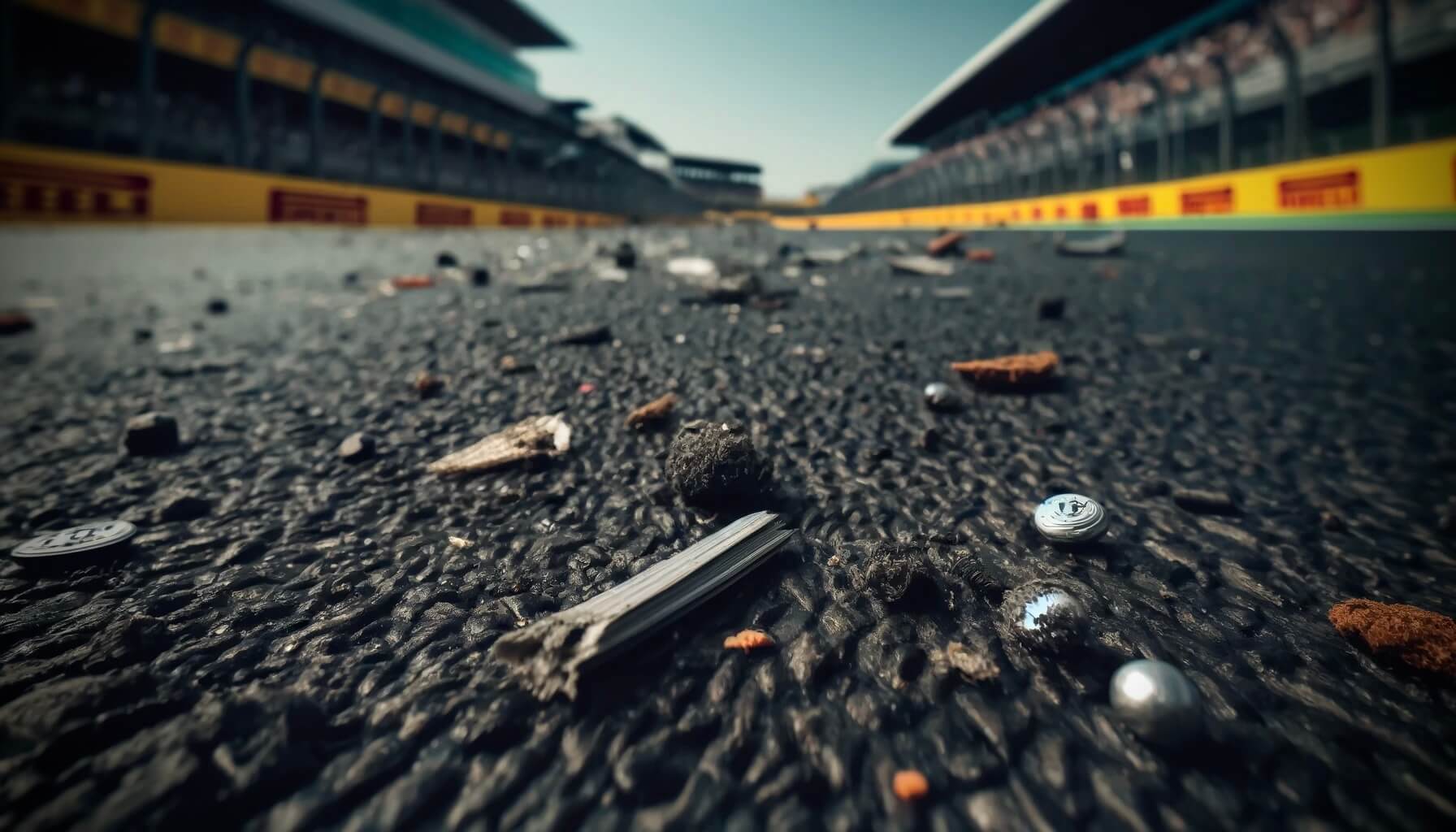
The notorious bump on the racing line at Tamburello corner is a critical element in understanding the circumstances surrounding Senna's fatal accident. Damon Hill, reflecting on the dangers of the track, revealed that he deliberately avoided the bump, even if it meant sacrificing precious milliseconds per lap.
Hill's cautious approach underscored his awareness of the potential danger, prioritizing his safety over marginal gains in lap time.
In contrast, Senna's approach differed. He remained committed to the racing line, pushing the car to its limits in pursuit of optimal performance. However, this posed significant challenges, potentially disturbing the aerodynamic balance of the car and compromising control at high speeds.
This deviation from Hill's cautious strategy may have exposed Senna to greater risks, ultimately contributing to the tragic outcome of the race.
By examining these differing approaches between drivers like Hill and Senna, we gain insight into the complex dynamics at play on the racetrack. The consequences of these decisions highlight the delicate balance between speed and safety in the high-stakes world of F1 racing.
The integrity of the steering column is one of the most significant talking points in debates surrounding Ayrton Senna's tragic crash. Adrian Newey's autobiography, How to Build a Car provides extensive detail on the regulatory changes and engineering efforts related to the steering column before the race.
Teams were rushing to implement quick changes in response to safety concerns, but these modifications had not been properly tested. This raised questions about their effectiveness and potential implications for car performance and driver safety.
One of the key debates centers around whether the steering column broke, rendering Senna unable to turn the car. Onboard footage shows the steering wheel casting snapping, indicating that the column likely did not break. However, the column was completely detached after the collision and lying in the middle of the track, complicating the investigation.
Limited data and conflicting evidence have made it challenging to definitively determine the status of the steering column and its role in the crash. The complexities of the incident highlight the difficulties in investigating such incidents and the ongoing challenges in enhancing safety standards in motorsport.

Following the crash, Newey's involvement in legal proceedings became a significant aspect of the aftermath. He faced multiple legal hearings and investigations, including defending himself against manslaughter charges. The legal process was arduous and protracted, with Newey having to navigate complex legal proceedings to prove his innocence.
Despite the intense scrutiny and challenges he faced, Newey was ultimately acquitted of any wrongdoing. His acquittal marked a significant moment in the legal aftermath of the crash, providing closure for Adrian and his supporters while highlighting the complexities of assigning blame in such incidents.
There was an aura about him, something that’s difficult to describe. He most certainly had a presence. Adrian Newey
In modern times, there is a heightened awareness and understanding of mental health issues, with resources and support readily available for those in need. However, in the era of Ayrton Senna's career, discussions about mental health were often taboo, and athletes were expected to bottle up their emotions and soldier on, regardless of the challenges they faced.
Damon Hill's autobiography Watching the Wheels provides insight into Ayrton Senna's personal struggles, including the challenges he faced in his relationship with his sister, Viviane. Senna's sister battled with a terminal illness, which undoubtedly weighed heavily on him emotionally.
While specific details about the struggles with his sister are not extensively documented, the emotional toll of witnessing a loved one's illness and suffering would have undoubtedly affected Senna, who was a deeply emotional man.
Ayrton represents a valuable asset to the country, a bright power for Brazil Vivian Senna (Ayrton's sister)
Additionally, expectations of the Brazilian population placed a significant weight on his shoulders, as he was regarded as a national hero and a beacon of hope for his countrymen. His status as a man of the people and his deep connection to the struggles faced by his people added layers of complexity to his mindset and emotional state.
The Brazilian population faced significant challenges during the early 1990s, including high inflation rates, political instability, and widespread poverty.
Economic reforms and social disparities exacerbated these issues, creating a climate of uncertainty and hardship for many Brazilians. Against this backdrop, Ayrton Senna emerged as a symbol of hope and inspiration, representing the possibility of success and achievement amidst adversity.
The difficulties and uncertainties surrounding his sister's health, and the weight of Brazil’s expectations on his shoulders likely added to Senna's emotional burden and may have contributed to his state of mind, and ultimately his decision making leading up to the fatal crash.
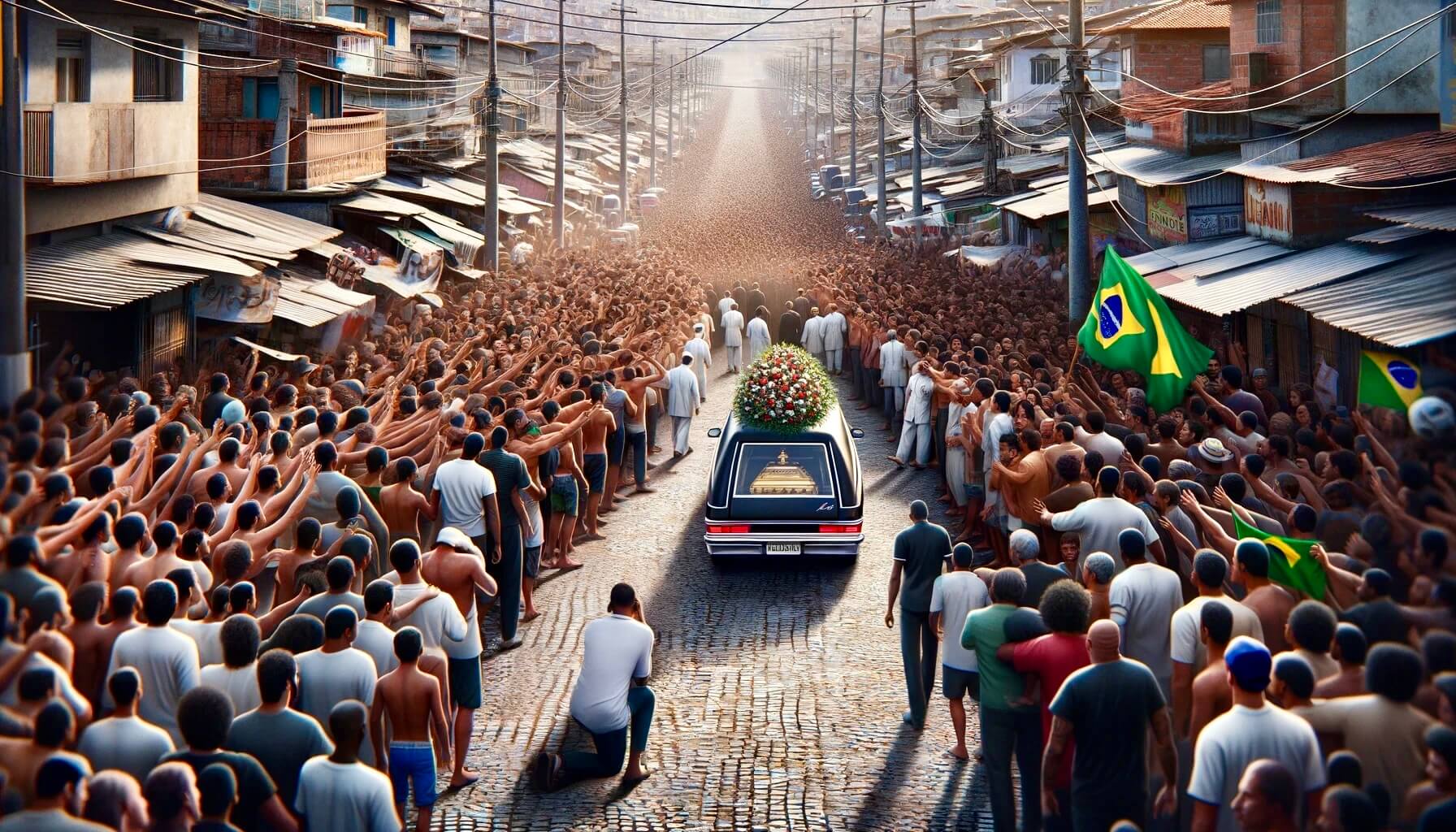
While Ayrton Senna was celebrated for his remarkable achievements on the racetrack, it's crucial to acknowledge that he, like all of us, was susceptible to the pressures and challenges of life. Despite his extraordinary talent and determination, he was not immune to the struggles faced by many.
Following the crash, Formula One underwent significant changes to enhance safety standards and prevent similar incidents in the future. The introduction of more rigorous crash testing protocols for cars, including improvements to cockpit design and increased head protection for drivers, became a priority.
Circuit safety measures were also enhanced, with revisions to track layouts and the implementation of stricter regulations regarding circuit design and safety barriers. Additionally, medical facilities and response protocols were upgraded to ensure rapid and effective medical intervention in the event of accidents.
These changes represented a paradigm shift in the world of Formula One, ushering in an era of heightened focus on driver safety and prompting ongoing advancements in technology and regulations to protect the lives of drivers on and off the track.
The tragic loss of Ayrton Senna shook the world of Formula One to its core, but it also sparked a profound transformation. As the sport grappled with the aftermath of the crash, it underwent a period of introspection and innovation, leading to unprecedented advancements in safety measures.
Senna's legacy lives on not only as one of the greatest drivers in the history of motorsport but also as a catalyst for change, inspiring a relentless pursuit of excellence and safety in Formula One. His unwavering spirit and dedication continue to inspire drivers and fans alike, reminding us that while champions may come and go, their impact on the sport and the world endures.